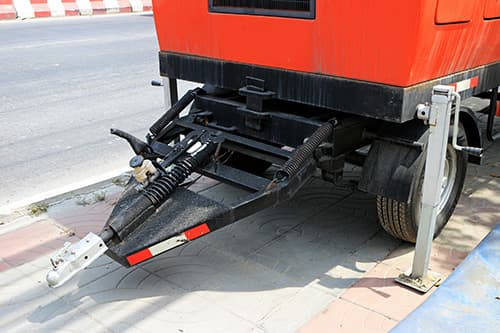
Designing efficient trailer ramp springs is one of the most critical parts of trailer construction. Thoughtfully and professionally designed trailer ramp springs go a long way in ensuring the smooth and secure loading and unloading of goods. At Wermke Spring, we understand the importance of accuracy in designing trailer ramp springs. With over 100 years of experience in the industry, we offer unbeatable expertise in trailer ramp spring engineering.
Consider these steps when planning and manufacturing ramp springs for any application. To learn more about our customized trailer ramp springs engineering assistance services or get to work with our team for your spring manufacturing needs, contact us online or by phone.
Step-By-Step Process of Trailer Ramp Spring Design
Follow these key steps to help ensure the success of your trailer ramp spring. These steps include:
- Identify the Type of Ramp You Require: Before you start designing any trailer ramp springs, it is essential to understand the specific requirements of your trailer. For this, you will need to consider factors like the style and weight of the ramp, gate, or lid. Remember, when you are measuring the weight of the ramp to weigh it when it is not attached to the hinge.
- Calculate the Length of the Ramp: The next step in designing your trailer ramp springs is to measure the length of the ramp. The ramp length is a critical factor as it influences the leverage and force needed for optimal spring design. Longer ramps put more pressure on the springs, requiring more consideration during the trailer springs design process.
- Specify the Bar Diameter: Determine the diameter of the bar that you will run through the spring. This is a critical specification as the shaft diameter directly affects the inner diameter of the trailer ramp springs and their ability to perform effectively.
- Measure the Deflection and Calculate the Free Position Angle: Next, you will need to determine the amount of deflection needed for the trailer ramp, gate, or lid. This measurement should include the range from the closed position to the fully open position. Then, calculate the angle at which the trailer spring will be positioned when not under load. This is called the free position angle, which directly affects the spring’s initial tension and starting position. Adding a fraction of the coil at the end of the spring determines the leg positions.
- Select the Material: Choosing the appropriate materials and finish for your spring is another crucial step. Select materials that provide sufficient strength, durability, and resistance to environmental factors like temperature, moisture, and chemicals. After all, the choice of material and finish directly impacts the spring’s performance and lifespan.
Contact Wermke Spring for Professional Assistance While Designing Your Custom Springs
Designing trailer ramp springs on your own can be incredibly complicated. And since these springs play a vital role in your trailer functionality, getting assistance from an experienced spring manufacturer is a smart choice.
This is where the experts at Wermke Spring come in. We can help you calculate your needs and help engineer custom springs for all your needs. Based out of St. Louis, we work with clients across Missouri, the Midwest, and other parts of the country. Contact us online or by calling us directly at (636) 677-5500 to learn how we can help.



